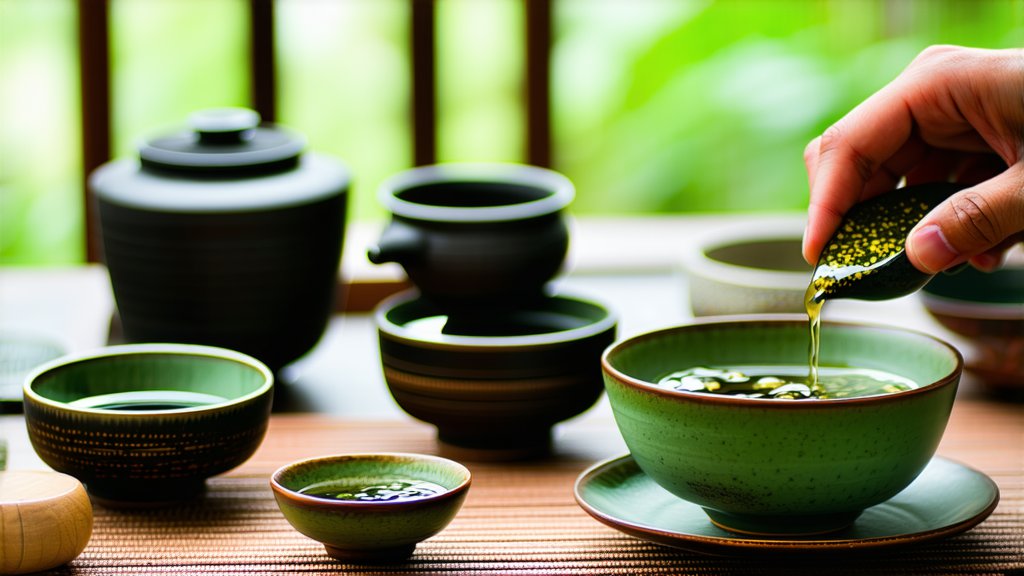
The world of Chinese tea is a vast and intricate tapestry woven with centuries-old traditions, and among its most revered threads is the exquisite Tieguanyin Oolong tea. This semi-oxidized tea, hailing from the Fujian province in China, is not just a beverage but an art form that embodies the harmony between man, nature, and craftsmanship. In this exploration, we delve into the historical roots, varietal diversity, meticulous production process, optimal brewing rituals, and the nuanced art of appreciating Tieguanyin's unique character.
A Glimpse into History:
Tieguanyin, often translated as "Iron Goddess of Mercy," traces its origins back to the early Qing Dynasty (1644-1912). Legend has it that the tea was named after a pious Buddhist nun who discovered and cultivated these extraordinary tea plants on the slopes of Mount Mudan in Anxi County. Her devotion to both her faith and the art of tea cultivation resulted in a tea so exceptional that it earned divine favor, hence the poetic name. Over time, Tieguanyin gained royal patronage during the Qing era, further cementing its reputation as a tea of unparalleled quality and prestige.
Diversity within Uniformity:
While all Tieguanyin belongs to the broader category of Oolong teas, there exists a subtle yet significant variety within this single species. Variations can be attributed to differences in cultivation altitude, soil composition, climatic conditions, and the skill of individual tea masters. These factors contribute to distinct aromatic profiles and taste experiences, ranging from floral and orchid-like notes to more robust, toasty undertones. Some prized subtypes include "Qing Xiang" (Green Fragrance) for its fresh, vegetal aroma, and "Gong Fang" (Traditional Craft), known for its complex fruity and creamy flavors.
The Dance of Craftsmanship:
The making of Tieguanyin is a choreographed dance of precision and intuition, involving several stages that transform tender tea leaves into their final, aromatic form. It begins with careful plucking of new shoots and leaves, typically in late spring to early autumn when they are at their peak vitality.
-
Withering: The freshly picked leaves are spread out to wilt under gentle sunlight or indoors, allowing moisture content to decrease slightly and enhancing their flexibility for rolling.
-
Tossing/Shaking: This step involves gently tossing the leaves in bamboo baskets or tumbling machines to induce bruising and initiate oxidation. The edges of the leaves darken while the centers remain green, creating the characteristic "green leaf with red edges" appearance.
-
Fixation: To halt oxidation and set the tea's flavor profile, the partially oxidized leaves are quickly fired in hot woks or drum roasters, locking in their unique aroma and taste.
-
Rolling: The fixed leaves are then carefully rolled into tight, spiral shapes by hand or machine, a process that further enhances their aesthetic appeal and facilitates even drying.
-
Drying: Finally, the rolled leaves are slowly dried over charcoal fires or in temperature-controlled ovens until they reach an ideal moisture content, ensuring longevity and stability in storage.
Brewing Rituals:
To fully appreciate the depth and complexity of Tieguanyin, proper brewing is essential. Here is a step-by-step guide to unlocking its potential:
-
Water Quality: Use filtered or spring water to avoid any impurities that might interfere with the tea's pure flavors. The water should be heated to approximately 180°F (82°C), which is slightly cooler than boiling point.
-
Tea Quantity: For a standard gaiwan (traditional Chinese teapot) serving, use about 5 grams of Tieguanyin per 100ml of water. Adjust accordingly based on personal preference and vessel size.
-
Warming the Vessel: Pre-warm your teapot and cups with hot water to maintain an even temperature throughout the brewing process.
-
Infusion: Add the tea leaves to the pot and gently swirl them around to rinse briefly before discarding this initial infusion. This step serves to awaken the leaves and remove any surface dust.
-
Steeping Time: Pour the hot water over the leaves, covering the pot with its lid to retain heat and allow the tea to steep for about 20-30 seconds for the first infusion. Subsequent brews can have longer steeping times, up to 45 seconds or more, depending on desired strength.
-
Serving: Evenly distribute the brewed tea among the cups, ensuring each guest receives a fair share of the infused liquid and floating leaves.
Sensory Evaluation:
Appreciating Tieguanyin goes beyond mere consumption; it is an immersive sensory experience that engages sight, smell, taste, touch, and even sound.
-
Visual Appeal: Observe the tightly rolled leaves unfurling gracefully in the clear broth, revealing a vibrant green hue interspersed with occasional hints of red along the edges. The liquid should be a bright, translucent amber color.
-
Aromatics: Before tasting, inhale deeply to capture the tea's complex bouquet. Notes of orchid, jasmine, ripe fruits like peach or apricot, and a subtle mineral undertone are common, reflecting the terroir and processing techniques.
-
Taste Profile: Sip slowly, allowing the tea to coat your palate. Initial impressions may reveal a delicate sweetness balanced by a light astringency, followed by layers of fruitiness, creaminess, and a long-lasting aftertaste that lingers pleasantly.
-
Texture: Notice the smooth, velvety mouthfeel that speaks to the high quality of the tea and expert handling during processing.
-
Sound: As you pour the tea from the pot into cups, listen for the gentle gurgle, a soothing auditory cue that enhances the overall tranquility of the tea ceremony.
In conclusion, Tieguanyin Oolong stands as a testament to China's rich tea heritage, embodying a perfect marriage of natural beauty, human ingenuity, and cultural depth. Each cup offers a journey through time and tradition, inviting international enthusiasts to partake in a ritual that transcends borders and connects us all through the universal language of tea.